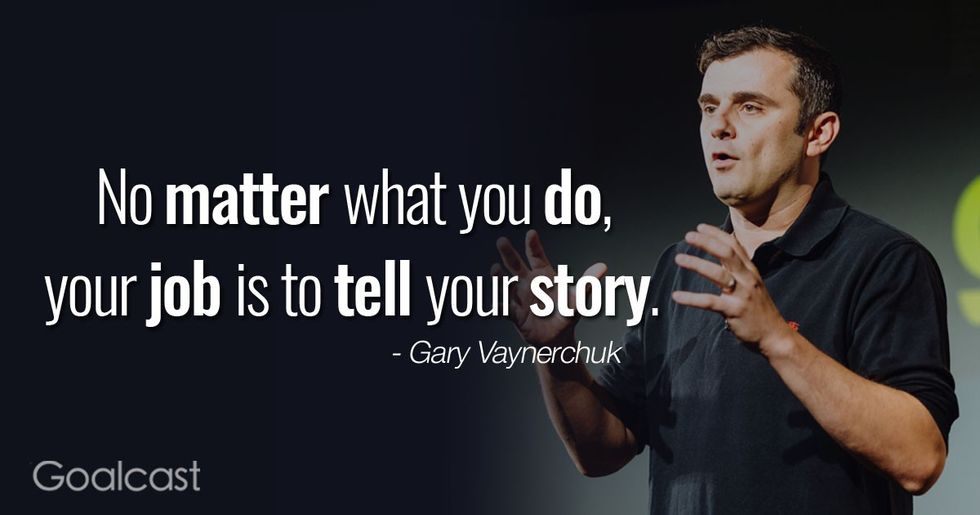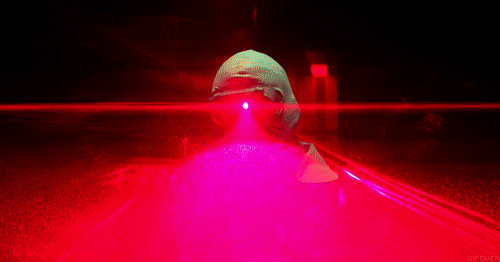 |
| Ryan Gosling is my motivation |
 |
| ...and Gary Vee |
Now, on to some specifics. I actually made a mistake about Glaucoma itself. It is not the condition of high intraocular pressure (though this is a risk factor). Glaucoma is simply damage to the optic nerve, and this damage looks like cupping from the outside looking in. There are many risk factors for Glaucoma, such as age, race, gender, smoking, certain injuries, and high pressure. The only two that can be controlled are smoking and pressure. McKee always tells his smoking patients that, "Now is the perfect time to stop smoking." They know they could keep smoking or go blind. Simple decision. Pressure is the only one that the doctor has real control over. Drops, lasers, or surgeries can help decrease the pressure. The iStent is a surgery, and the SLT is a laser.
 |
| Not quite an SLT but close enough :) |
Okay now that I clarified that, I'll talk about what I actually did this week. Dr. McKee was brutally honest with me (which I love about him) when he said that following him in clinic would not help me. I agreed with him, so he let me focus on getting data instead of following him. In clinic, all I would have done is stand in the small rooms listening to him talk to the patients about their options for treatment of Glaucoma or other diseases. He even admitted that he could not talk to me last time I followed him, because he moves between patients so fast. At one time, there could be around three patients waiting in separate rooms, and Dr. McKee has to see them all. It is a tough job, but he gets it done every day.
Half the day is dedicated to clinic, and the other half is surgeries. Tuesday morning, I followed him through all his cataract surgeries, and I actually got to be in the room as he did them, which was super cool. I could not be in the room last time because I did not have a TB skin test. Ironically enough, Dr. McKee did not have one either, so I did not feel terrible about it after that. Last week, I watched the surgery on a TV in a room next door to the surgery room, which was cool, but not as cool as this. I really understood the difficulty of the surgery after seeing it with my own eyes, because Dr. McKee had to use both feet and hands to properly do it. One pedal controls the microscope, another one controls the settings for the tools, and he uses both hands to actually apply the tools to the eye. It's ambidexterity taken to a whole new level.
Thanks for reading and I hope I answered some questions! See you guys next week!
Very interesting research! Keep up the great work.
ReplyDeleteThanks for reading!
DeleteFascinating! Are you surprised by anything you've learned from the data and statistical analysis?
ReplyDeleteThanks for reading! We are not really surprised because we expected the iStent to work and the SLT to work for about a year. I will go deeper into it in another blog post, but it is all working out well!
DeleteHi Brent!
ReplyDeleteGreat post this week! Is there a specific demographic that you see more often than others at the office? Did the data analysis show anything particularly interesting? Looking forward to your next post!
Thanks for reading! Almost all our patients are older than 50. I am fairly certain that no young people are included in our study, which is good in a way. The data showed what we expected, in that the iStent works for two years and the SLT works for about one year.
DeleteHey Brent! Really interesting first post and it seems like you're having fun at your site! Were you able to see anything new/ interesting in the data analysis? Also will you be solely analyzing data on site or will you still have the opportunity to observe more surgeries? Great post again and can't wait to read more!
ReplyDeleteThanks for reading! We were not surprised by the results, in that the iStent worked for two years and the SLT worked for about one year. I actually have the chance to work almost anywhere in the office, so I will be having fun with all the big boy toys :).
DeleteHi Brent! Your work at your internship site is all so cool! I was just wondering why you need to have a TB skin test done to be in the surgical room. Is it something to do with how the surgeries are done? Or is it to do with the fact that it's a surgery done on the eye? Looking forward to the next post!
ReplyDeleteThanks for reading! They have regulations for people to be allowed in the Operating Room, and the TB skin test was the only test I did not have. They have to make sure I do not have Tuberculosis (which I don't).
DeleteHi Brent. Your site sounds really interesting. It must be very cool to see surgeries and talk to an experienced doctor. I'm looking forward to reading your future blogs. Jack.
ReplyDeleteThanks for reading!
DeleteHi Brent! I never really understood what Glaucoma was until I read that good analysis you had. I really enjoy how you update us on your weekly activities, because it is interesting to see the process and not just the result. When you observe the surgeries do you analyze what Dr.Mckee does and try to incorporate what he does in the surgeries into the iStent? Also, when the iStent is finished will it be used in place of surgery or will it be administered in addition to a smaller magnitude surgery?
ReplyDeleteThanks for reading! The iStent is a device implanted into the eye during cataract surgery. iStent is not a surgery itself. Also, I do not perform the surgeries, because I would have to be a medical professional to do so.
DeleteHi Brent! It's nice to see that you're now applying your skills to more data collecting for your paper. How many cataract surgeries were you able to see during the day? Were they all of similar length, or were some cases more complex then others? I'm looking forward to the statistics and data you manage to collect in the coming weeks!
ReplyDeleteThanks for reading! In one morning, I saw about 15 cataract surgeries. Some cases are more complex, which means they do not dilate as well or there is another unusual risk factor. Dr. McKee handles them well though, because he has a whole day dedicated to the really difficult surgeries (Monday).
DeleteHow does smoking affect eyesight? That's my only question and the explanations you had were really helpful!!! I can't wait to read more of your studies!
ReplyDeleteThanks for reading! Smoking is just very unhealthy overall. Putting those chemicals into one's body messes everything up. The eyes are not exempt from that, sadly, so the pressure (a very sensitive balance in the eye) is easily affected by smoking.
DeleteHello! i'm thrilled to hear that you were able to watch the surgeries occur, but i was wondering what exactly Dr. McKee was doing on each patient? also, i was wondering how unchangeable factors like gender and age could affect the pressure in the eye? it all looks very interesting though keep us posted!!
ReplyDeleteThanks for reading! Dr. McKee was performing cataract surgery, so he was breaking up the natural lens in the eye and replacing it with an artificial one. Those factors might make one person more likely to have Glaucoma; it only changes the chance of getting the disease.
DeleteHi Brent! It's nice that you get to spend more of your time on collecting data than shadowing. My question is how would race and gender be a factor in this? Also, being in the surgery room and watching the surgery sounds (and is) really cool!!
ReplyDeleteThanks for reading! Certain factors make certain people a more likely candidate for Glaucoma. It only means they have agreater chance of getting the disease depending on the factors.
DeleteHi Brent!! Your revised thoughts abbot Glaucoma and that it is simply just a condition affecting the optic never is interesting . I was interested to know how race is a factor in whether you test positive for the condition or not?
ReplyDeleteThanks for reading! The more color someone has, the higher chance of them having Glaucoma. Just because they have more color does not mean they are guaranteed to have Glaucoma though. It only means they are more likely to have it.
Delete